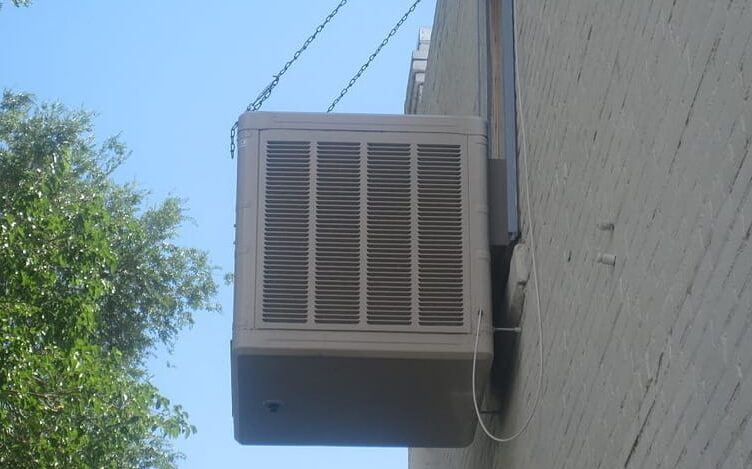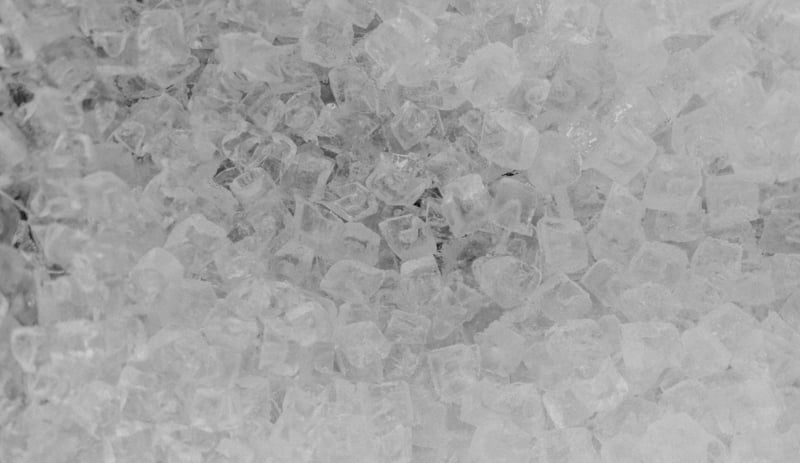Last Updated on March 19, 2023
Swamp coolers are great cooling alternative to air conditioners, particularly in hot and dry climates. Due to their working principle, naturally they increase humidity. Besides primarily our own comfortability, how does it affect electronics? An average room has multiple electronic appliances, let alone a room filled with them, like server room. Can a swamp cooler damage electronics?
Swamp cooler can affect functioning and potentially harm electronics, when it increases relative humidity to levels causing condensation. This can result in short circuiting, cause corrosion to disturb metallic components’ conductivity and lower overall effectiveness of air-cooling, by clogging passages, due to mixture of water and dust.
Suitable range of relative humidity for electronics is 30-50%. When it comes to appliances, high as well as low humidity is a problem.
Besides the detrimental side effects of high humidity, very low humidity can cause electrostatic discharge. Static electricity can permanently ruin components of electronic devices. More on that coming later.
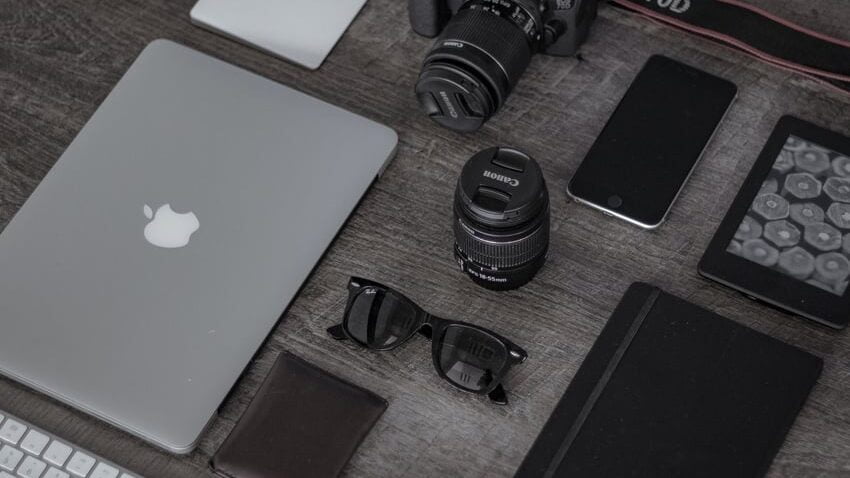
So, can you use swamp cooler in a room with electronics? Well, it depends. Actually, there are so many factors that have to be taken into account before answering this question and reaching a conclusion.
But no worries, that is what this article is all about. I will cover everything, step by step, so you know exactly, whether it is OK, specifically for you, to cool room with electronic appliances using swamp cooler.
Effects of Inadequate Humidity on Electronic Appliances
Electronic appliances require suitable humidity to work correctly. For most electronics, the adequate range of relative humidity is 30-50 percent.
If humidity is very high or low compared to optimal range, then your appliances can be damaged, especially humidity-sensitive components like microprocessors or chip scale packages.
Effects of High Humidity on Electronic Appliances
High humidity can result in poor functioning of appliances, their deterioration and permanent damage. Electronic circuits are most prone to damage by humidity due to phenomenon of condensation.
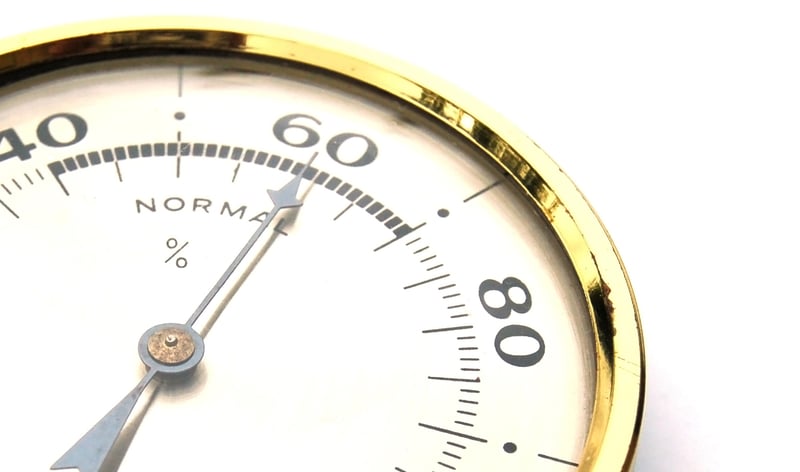
Condensation occurs when water vapors from air convert to liquid droplets. This happens when air’s temperature drops to dew point, due to contact with cooler surfaces. It can affect your appliances in the following ways:
Corrosion
Water can cause corrosion. Corrosion in components of circuitry, like capacitor, transistors etc., affects their conductivity. This can deteriorate performance or cause your appliance to stop working.
Short-Circuiting
Condensed water droplets can cause short-circuiting in electrical circuits and permanently damage it.
Clogging of Air-Cooling Passages
Water can mix with dirt and block passages for airflow that serve for cooling. This will reduce effectiveness of cooling system in your appliance, causing it to overheat and result in poor performance.
Effects of Low Humidity on Electronic Appliances
As I told earlier, electronic appliances require a suitable humidity range to work rightly. Just like high humidity, low humidity is inappropriate for them.
Electrostatic Discharge (ESD)
Low humidity in electrical circuits can cause electrostatic discharge (ESD) or static electricity.
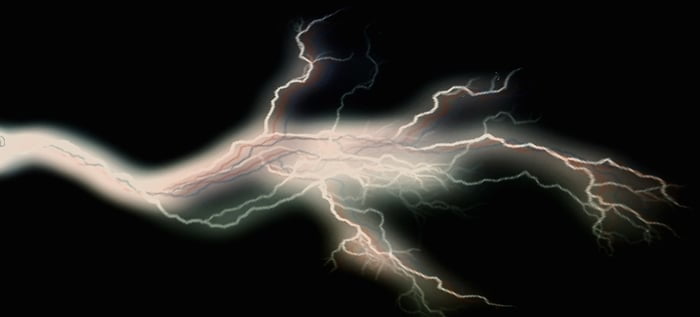
With enough humidity, static charge in electrical components is diminished in air. However, when humidity is really low, they are not able to get rid of static charge.
As a result, as soon as electrostatically charged component comes in contact with a conductor, an excessive current is transferred causing circuit to damage.
Why Swamp Cooler Increases Humidity?
Swamp coolers are simple appliances, that are able to cool the environment, using principle of evaporation.
Evaporation of water requires heat energy. When air passes through wet cooling pads in your swamp cooler, water extracts heat from the air and then evaporates. As a result you get cooled air.
However, as a side effect, moisture in the air delivered is increased, compared to air that is sucked by your swamp cooler. This increases overall humidity in the space where swamp cooler operates.
How Much Humidity is Increased Due to Swamp Cooler?
Before you think of running a swamp cooler, in a room entirely full of electronics, like server room, or partially full, like workspace with laptops, computers and phones in it. It is a good idea to know the estimated increase in humidity, if you run a swamp cooler in it.
This is important and specific for the category of electrical appliances we are talking about. Some electronics appliances are more sensitive to humidity than others. I will discuss more of that later in this article.
The amount of increase in relative humidity, by a swamp cooler, in a room atmosphere, is directly dependent on the amount of evaporative cooling.
This means, the more the evaporation caused by your swamp cooler, the better the cooling, but the more is moisture added to the room.
Traditional coolers condition air at humidity of about 80-90 percent, and cause humidity levels indoor up to 65 percent.
Note: The moisture in the air delivered by swamp cooler is necessarily not the humidity of the room, in which they operate. Airflow and other factors have a significant effect on the relative humidity of the room. This is what I cover in the next section.
Factors That Decide Compatibility of Swamp Cooler With Electronics
Will Swamp cooler affect your electronics specifically? The answer to this question is not so straight forward.
The reason is that there are so many factors that decide, whether the swamp cooler will negatively affect electronics, cause damage or even improve functioning in some cases.
Don’t worry if the answer seems overwhelming, I will discuss the factors that matter, one by one. They will help you decide if using swamp cooler will work, specifically for you, or not.
1. Where Are You Located?
Swamp coolers work best in hot dry climate. Their functionality improves with decrease in humidity and increase in temperature. Thereby, in regions with sufficiently low humidity and high temperatures, you are going to get best evaporative cooling function.
In places where humidity is relatively very low, not only will you be able to safely use swamp cooler with your electronics, but actually the suitable increase in humidity will protect your appliances.

Really low humidity is detrimental to electrical appliances. It can cause electrostatic discharge (ESD) that can permanently damage circuitry.
If you happen to live in regions like San Francisco or New Orleans, they have high relative humidity most time of the year. It is best to avoid using swamp coolers in regions like those, as it will be detrimental for you, your appliances and your home.
Can’t Decide If Humidity Is Right For Swamp Cooler In Your Region?
In between most dry and most humid regions, there is a spectrum of moderately low to moderately high humid regions.
If you happen to use swamp cooler in one those regions, I advise you to:
- Roughly estimate expected increment in humidity indoors, if you use swamp cooler. I discussed that in detail in the section above.
- Then work on suitable measures to minimize moisture given off by swamp cooler. Establish an adequate airflow and size your cooler right to do this. However, there is much more you can do (more about humidity minimization later).
If the indoor humidity is up to 50 percent, great. If around 60, still workable. But if it goes much higher than that, that is when I would start worrying.
2. Time of The Day When You Use Swamp Cooler
Despite the climate of the region you live in, relative humidity changes during the day too.
In morning, compared to the entire day, humidity is higher. In fact, it is highest at sunrise. It reduces as the day progresses and the temperature increases. It is minimum thereby sometime close to afternoon.

The best time with minimum humidity and maximum evaporation and thereby maximum performance is daytime, when the temperature is highest during the day.
3. Type of Electronics You Are Concerned About
There are different types of electronic appliances we encounter every day. They differ in their size, complexity, sensitivity and performance. Depending on the circuitry, they reaction to humidity is different. Some are more sensitive to humidity than others.
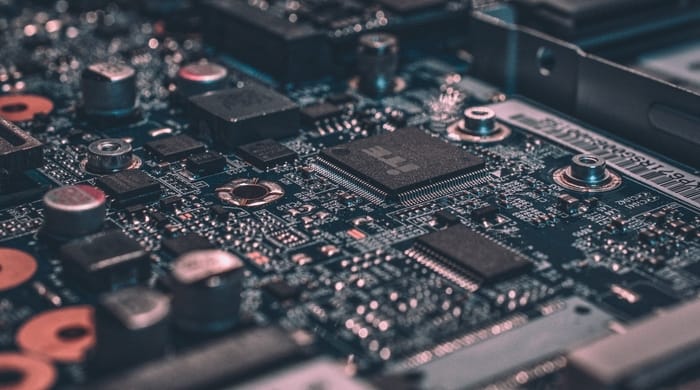
For example, ball grid array electronic components, that are directly placed on surface of PCB i.e. microprocessors, are highly sensitive compared to an electric motor. Similarly, chip-scale packages used in mobile phones are another example of electronics highly sensitive to humidity.
The more they are humidity-sensitive, the more you should stick to safe range of humidity, especially if the humidity in your region is relatively high.
4. Closeness of Temperature to Dew Point
As I discussed earlier, temperature directly impacts evaporation. Thereby, the temperature of the intake air directly impacts the humidity delivered by your swamp cooler.
Higher temperature means that relative humidity is less. This is the reason you have least relative humidity in the day close to afternoon, when temperature is highest.
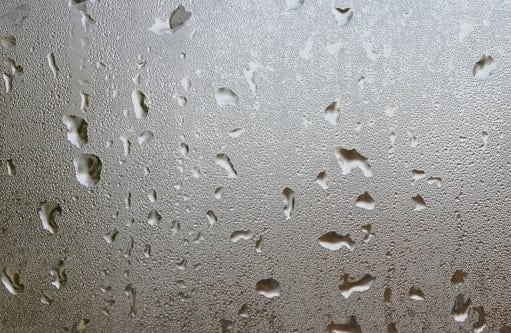
Considering this factor specifically, there are two scenarios that can render swamp cooler not suitable indoors for your appliances:
- You are able to achieve temperature indoors as low as dew point. This will cause reduction in humidity, due to condensation. This is how AC controls humidity. With overall decrease in humidity, condensation will be higher that can affect your indoor appliances.
- The intake air is at high temperature and high humidity. Temperature in the room is lowed by your swamp cooler, close to dew point but not equal or lower than that. In this case, it would cause the humidity levels in the room to be very high.
This single factor, though important, cannot rule out the possibility of the use of swamp cooler, there are so many other factors that have to be taken into account especially dryness of the air, ventilation, size of room etc.
5. Airflow in The Room
Swamp cooler operation needs adequate airflow, unlike air conditioners that require a confined closed space.
The airflow in the place, where you wish to use swamp cooler, is truly important thereby in this regard. With poor airflow you will not be able to expel the humidity added by your swamp cooler and overall humidity in the room will significantly increase.

When it comes to ventilation, you can always improvise. You can improve airflow in the room by opening windows. This will allow fresh air to come in and humid air to move out.
To further improve air flow rate, you can use forced ventilation. I have discussed it in detail in this article.
6. Running Time and Size of Swamp Cooler
The more you run your swamp cooler, the more humidity is added to the room. This becomes important when you only want to use swamp cooler as a temporary or secondary cooling source.
For example, you turn it ON only for some time, when temperature exceeds a particular value. In that situation, you will have to weigh in all the other factors and note the timing in which operation of swamp cooler fairly exceeds humidity to undesirable levels.
In case it does, compare it with the time that you will usually need it for. Testing and reviewing will make you certain when to use and when not to use a swamp cooler.
The greater the size of cooler, greater is cooling but greater is humidity given off per time too.
Sizing is something that affects the humidity added to the room. I have discussed, how to properly size the swamp cooler, for minimum humidity, for required cooling, in the next section.
How To Minimize Humidity By A Swamp Cooler?
Due to the principle on which swamp cooler works, there will naturally be an increase in humidity. But there are certain measures that you can take, to minimize the humidity in the room, where swamp cooler operates.
This will help you achieve suitable and healthy environment for you and your electronic appliances, especially when humidity is relatively a little higher in your region and time of the year.
Appropriately Sizing Your Swamp Cooler
Sizing your evaporative cooler is important in this regard. It is very simple to do though.
Take the square footage of the room, in which you are concerned about your humidity-sensitive electronics and multiply it with room height, you will get room volume. Then split this in half. You just calculated CFM rating of the swamp cooler you need.
Square Footage * Room Height = Room Volume
Room Volume / 2 = CFM rating of the required swamp cooler
CFM stands for cubic feet per minute. It is the measure of air your swamp cooler moves in one minute.
The airflow rate generated by your swamp cooler directly affects cooling.
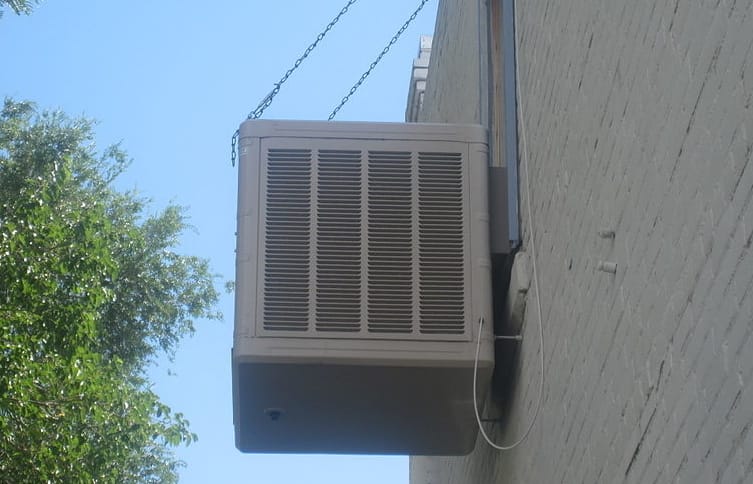
If you use a swamp cooler that has too low CFM rating, you will have inadequate cooling. If you use a swamp cooler that has too high CFM rating, you will have higher humidity.
Note: I am talking strictly particular to electronic equipment in this article. In general, it is always great to buy somewhat larger size than calculated. In fact, most of the times it’s preferable.
Adequate Airflow and Ventilation in Room
Unlike air conditioners, swamp coolers do not require closed room. In fact, an adequate airflow is required for them to work right.
When running swamp cooler, open your room windows to develop a cross flow of fresh air in the room. This will allow consistent removal of humidity caused by moist cooled air from the evaporative cooler.
This will not only let moist air out and drier air in but also improve performance of your swamp cooler.
Using Two-Stage Evaporative Cooling
The traditional evaporative coolers, that are mostly used, perform single-stage direct evaporative cooling. Hot air rushes through wet cooling pads, it is cooled as a result of evaporation and you get cool humid air.
The other type of evaporative cooling is single-stage indirect evaporative cooling. In this type, air does not directly come in contact with water. Rather hot air comes in contact with heat exchanger that has cool water flowing through it.
Air gives off its heat to cool water flowing in heat exchanger tubes and what you get is cool air, with no humidity added to it. This is great for low humidity requirements. However, the cooling effectiveness of this system is lower than direct evaporative cooling.
Two-stage evaporative cooling is the type in which direct and indirect evaporative cooling is combined with each other.
The result is a system with higher performance, higher energy efficiency, and most importantly as we are concerned about electronics in this article, immensely reduced humidity. The downside is that these unit are bulkier, complicated and less portable compared to traditional evaporative coolers.

